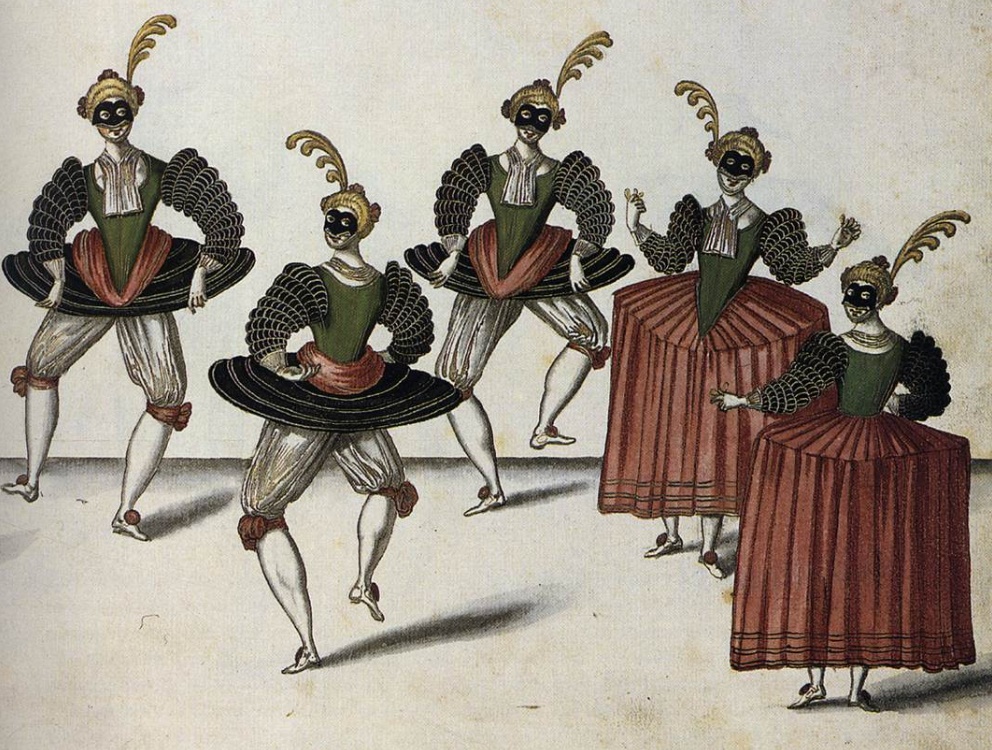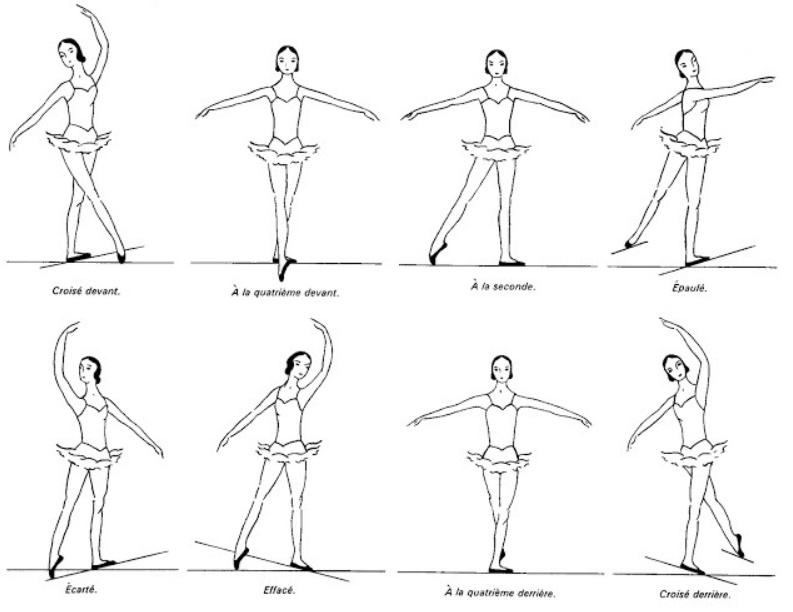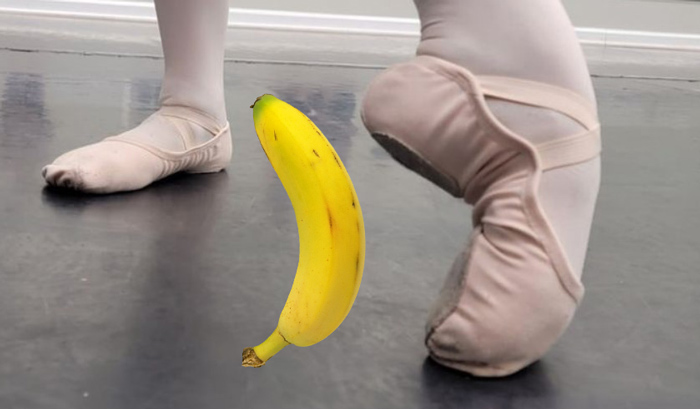Ballet has always been considered one of the most challenging forms of art, and we all have slowly come to realize how demanding it is on our bodies despite the graceful and elegant performances.
So, is ballet a sport or merely an art form? Let’s see how much we can blur or draw a boundary between them!
Table of Contents
Traditionally, Ballet Is An Art
By definition, “art” means a skill displayed or applied to meet subjective tastes, especially in music, dance, literature, and the like.
The most artistic aspect of ballet is undoubtedly the choreography. Choreography consists of dance moves conveying a message or a story with the accompaniment of music.
Dancing, story-telling, and music are more than enough for people to naturally see ballet purely as an art form.
However, this point of view has neglected the discipline and physical ability that ballet dancers must acquire.

Ballet Is A Sport, According To 4 Criteria
Ballet is certainly not the hardest sport if you look into the life of a water polo or ice hockey player. However, ballet fits the criteria of a sport:
- It requires skills.
- The skill is physical.
- Its following is wide.
- The following has some stability.
Ballet requires skills
You certainly need skills to start practicing ballet. To conquer challenging postures, you might even need advanced ballet techniques. Sports are all about training to sharpen your skills, which ballet has an abundance of.
The philosophy of sports is that skill decides the outcome, and ballet surely fits into the requirement. The moves you make matter, and how well you execute the moves also plays a big part in your success.

Ballet skill is physical
This criteria differentiates traditional sports from board games. When you compete in chess, your body movements don’t dictate your victory or defeat. You can even play similar games virtually or against a computer.
A traditional sport calls for real, physical motion of the body and, of course, ballet satisfies this condition as well.
Ballet has a wide following
Being sufficiently followed and institutionalized is imperative. When enough people take an interest and follow a subject, norms, and rules will be established, amended if necessary, and ensured by authoritative organizations.
As a classic form of art, ballet for sure has a large following, and ballet enthusiasts often know the etiquette very well.
In a practice room, there might be a dress code or a no-recording policy. Furthermore, ballet competitions enforce strict regulations that contestants must abide by unless they want to be disqualified.
The following is sufficiently stable
The targeted audience of ballet is connected to this art form in various manners. They are likely to have a deep interest in classical arts in general, and a preference for the ballet branches of it.
Consequently, they also enjoy music, literature, and drawings related to ballet.
Due to its innate appeal and the development of the internet, ballet has never lost its popularity. New productions and young talents always receive attention from the media, which is quite important in keeping art thriving.
Take a look at my comparison. You will be highly amused at how ballet and football might not be too different from each other.
Do you think ballet is harder than football? Let me know your thoughts after reading!
| Ballet | Football | |
| Skill level | High: Commoners like us can never leap and spin as if we were weightless.
Ballet requires high-level skills from years of training. |
High: Football players need determination and discipline to reach a godly level of physical strength.
For the best results, a strong mentality is also crucial. |
| Physically demanding | Extreme: Researchers have chosen ballet as the most challenging activity for a youngster. Sometimes, the intricate outfits add to the difficulty. | Extreme: Every player has a role to fulfill, and their prowess comes from nothing other than their physical capability. |
| Training | Intense: 1 hour to warm up, 1 1⁄4 hours to take the daily class, 1 – 2 hours to condition the body, 3 – 5 hours to rehearse. | Intense: HIIT and cardio workouts are indispensable for football players to cover 10 – 20 km per game. Body conditioning is needed too for lower injury risk. |
| Dedication | Years: Ballet dancers tend to start learning at 5 – 6 years old and get recruited at 18 years old. | Years: A lot of players started early in primary school and got accepted to a team at 18 years old. |
| Career | Moderate: Dancers used to retire at 30 – 35 years old but now they can go into their forties, thanks to the innovations in medical care. | Short: Professionals last for about 6 years because the physical toll on their bodies is too much, plus the injuries are so hard to avoid. |
But, Not A Sport In The Olympics!
Although ballet shares a lot of similarities with a sport, it is not part of the Olympics as of today.
I see a point in the history of ballet. It was created for high society and symbolized fine arts, hence the primary purpose of it is performing instead of competing. Therefore, the nature of athletic events is simply not compatible with ballet.
For example, we can take a look at ice dancing or figure skating. In events like the Olympics, a routine must include certain moves and postures, based on which the judges will give the deserved score and decide who is better.
Meanwhile, we have ballet competitions with an exclusive system of criteria.
First of all, ballet is about storytelling and not just techniques. More or less, the stories will affect the judges and the audiences in general, so it will be difficult for them to keep their judgment objective.
Secondly, and once again, skills and techniques are more important in the Olympics, while ballet dancers need to balance those requirements with artistry.
Who would want to spend hundreds or maybe thousands of dollars to see ballerinas being dancing machines or robots with no expression?
Lastly, ballet productions vary in terms of elements, techniques, genders, and number of performers. These factors must be uniform for all contestants if they are joining an event like the Olympics, though the changes will affect the quintessence of the performance they want to deliver.
Check more: 16 Interesting Ballet Facts You Might Not Know
Ballet Dancers And Traditional Athletes Are Different
On the surface, a ballet dancer and an athlete seem to go through the same hardship and discipline, yet the training methods they need to take are drastically different.
Training
Ballet dancers take extra training for their arms, legs, and core, so they can ace complicated moves with coordination, flexibility, and balance.
Meanwhile, exercises for an athlete often come with a purpose, such as achieving better stats or improving strength.
Check more: How To Get Banana Feet Ballet?
Conditioning workout
This form of exercise is necessary for dancers because they must have great endurance to complete extended sequences without feeling exhausted. However, not all sports require extreme stamina.
Intensity
An athlete is usually required to unleash their energy in short bursts in exchange for more resting intervals, though a ballet dancer must be able to distribute their stamina throughout the performance and not be tired out.
Mentality
Both dancers and athletes should have a stable and healthy mental state for peak performances, but a ballet dancer has to tell a story and convey the emotions included.
Rehearsal
Rather than recording the stats, ballet dancers practice and improve through rehearsals in their studio or on the stage.
The entire production is important to them, hence repeating the routine will help them memorize the moves and condition their bodies to meet the requirements.
Diet
Most athletes have an impressive amount of protein in their meals, and limit their carbohydrate intake so they can gain more muscle.
On the other hand, dancers want to have enough nutrients while maintaining their agility, hence vegetables and fruits dominate meats in their diet.
Therefore, while I have no qualms against ballet being considered a sport, I don’t think it is appropriate to label a ballet dancer as an athlete. There is so much more to a performer and an artist than a pure athlete competing for the win.
Conclusion
So, do you think ballet is a sport, or should it be considered one?
As a former dancer, I can attest to the physical aspect of ballet being as intense as any sport, but I still prefer referring to ballet dancers as artists rather than athletes.
Since this is quite an open and interesting topic for discussion, I would love to hear your opinion!

